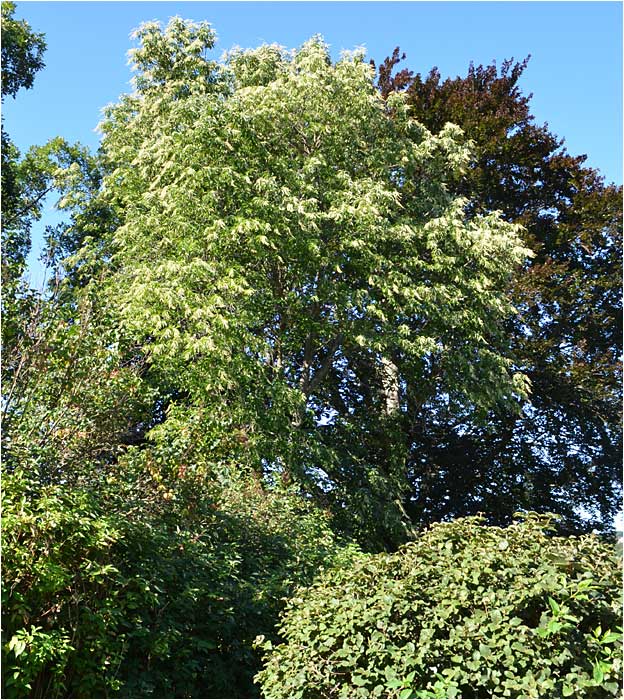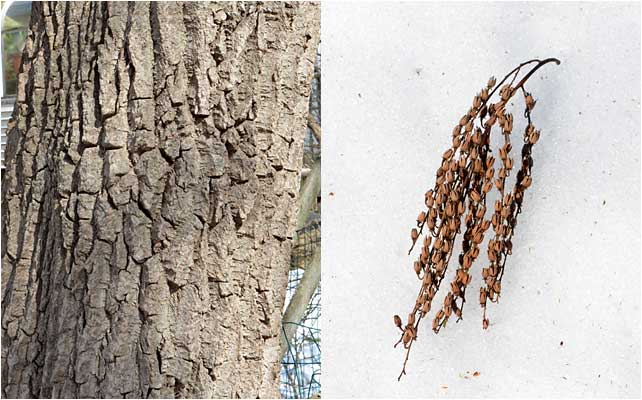65. SOURWOOD
Oxydendrum arboreum

The Sourwood Tree (also called Lily-of-the-Valley tree after its flowers) is native to the U.S. but until the last 50 or so years its northern range was considered Pennsylvania. It turns out to be a good native tree to plant in CT, and was doing well even back in the 70s and 80s. In Spring, when most trees are flowering, the Sourwood takes a pass...
SUMMER, FLOWERS

Instead, it waits till mid-July to begin flowering, and reaches peak in August. In the entire Arboretum, only one other tree flowers this late (Franklin Tree). The Sourwood is just to the east of the big Copper Beech, right on the corner of the Westmoor private residence. The flowers are also the source for SOURWOOD HONEY, usually ranked among the top ten honeys in the the world.
SUMMER, FLOWERS

These ethereal Sourwood flowers start out on slender wisps, and hang down on a single, one-sided raceme. They will grow slightly in size, but are profuse on the tree at any size. This is where it earns another name: Lily-of-the-Valley tree. It is also known in some parts as a Sorrel tree. A raceme is a type of inflorescence - a way that flowers and buds are displayed on plants. Notice the tiny flowers hang DOWN.
LATE SUMMER, SEED PODS

In mid-September, the seed pods of the Sourwood Tree begin to be seen. Notice these position themselves UP on the raceme. This Sourwood Tree is tall so you have to find the lowest branches to see this clearly.
FALL FOLIAGE

In Fall, the Sourwood Tree turns a medley of different, attractive colors. The seed pods are still on the tree.
WINTER HABIT

Winter. The natural shape of a typical Sourwood is a bit shorter than this, but this location poses a challenge for full sun from several directions. The Sourwood elected to go vertical before extending its canopy. It was planted in 1988 (then Naturalist Ken Garrahan) and is an excellent Arboretum tree.
BARK, SEED PODS

The bark of Sourwood is regularly and deeply furrowed (left). Seed pods blown down in Winter. The pods often hang on the tree till the following Spring.